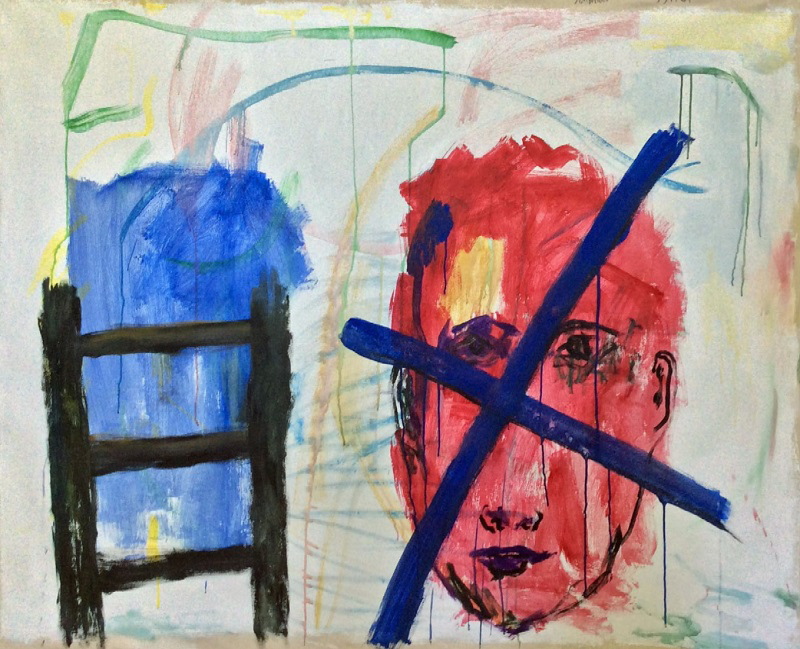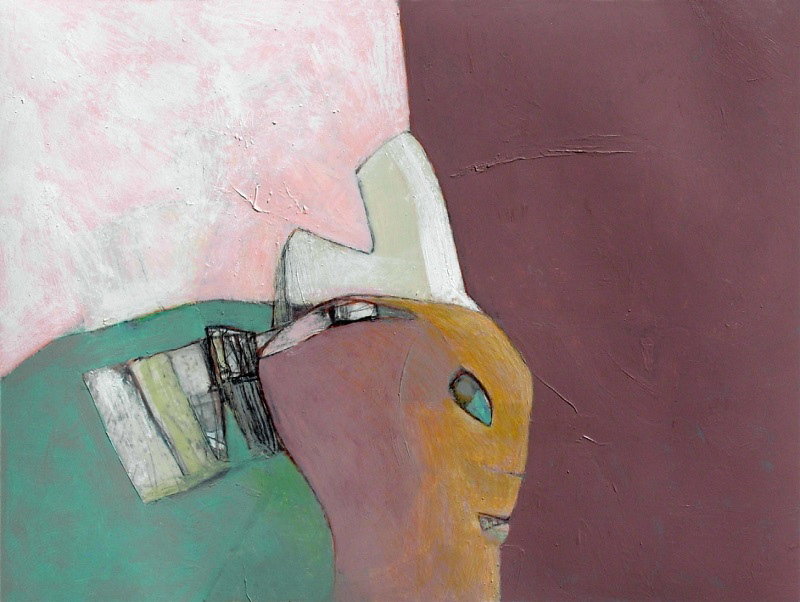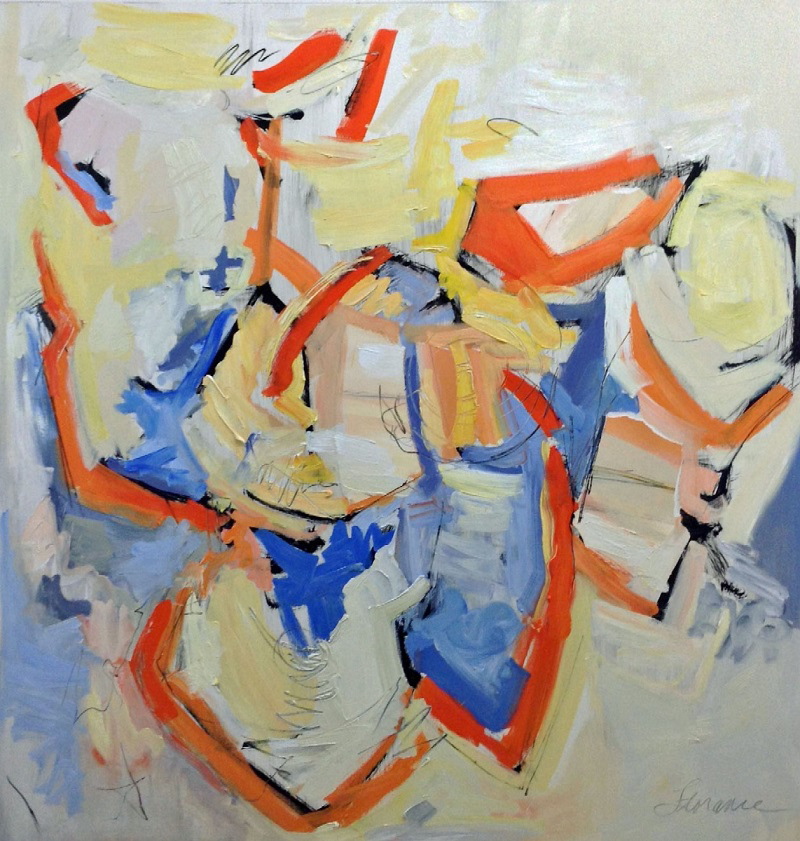Before photography, painting was transportive. The aim – as with language – was to represent things that are not present. Painting was not only mnemonic. It was also transcendent – it was religious.
We now can look at a still life as a set piece of painting and revel in the composition, the color, the drawing and its artistic qualities. Yet the still life (or “nature morte” – dead nature; let’s keep in mind we’re talking about Western painting and Christian culture) was, for centuries, a metaphor for an abundance for which we were to be divinely thankful.
Maybe it was photography that brought about abstraction. After all, when photos could be objective documents of objects, painting probably felt the need to rethink its purpose and meaning.
While we tend to focus on the fact that abstraction is not a picture of a specific thing, what we often miss is its shift from linguistic-style reference (e.g. a picture of a “cow”) to an experience more like music – which relies on a literal here-and-now combination of time and tone.
Featuring the paintings of David Estey, Kathleen Florance and Harold Garde, “Choosings” is an exhibition that matches this kind of existential self-examination in painting with a measure of wisdom and a pinch of brushy bravado. It is a decidedly modernist exhibition that makes a compelling case that artistic modernism and its goal of unmediated connection to the viewer cannot be thrown off by theoretical musings or ironical commentary. (Postmodernism has a great deal to say, but it makes the constant mistake of pretending to have defeated its forebears Oedipal-style; and it’s not like we don’t still appreciate Raphael, Shakespeare and Mozart.)
Each of the artists in “Choosings” hovers at the edge of abstraction. Florance is the closest. Her works are clearly abstractions, but they are driven by the morphology of the natural world. So while they aren’t pictures of identifiable things and they clearly take the shape of post-war American paintings in the ilk of Joan Mitchell’s or Willem de Kooning’s works on paper, they well from biomorphic shapes and references.
Estey’s works flip back and forth between legibility and the appearance of pure abstraction. The driving forces behind them are an intense density and the ratcheted-up role of his mark-making. This is particularly true in his black and white images that follow their painterly qualities away from drawing towards pure painting.
Garde’s paintings most clearly use imagery, but in a way that unquestionably shuns the pictorial space of photography or landscape painting. Painting, for Garde, is not a physical realm mirroring ours; it is a place for ideas. A teapot is made gigantic and pushed to the edges of a large canvas, for example. Its black outlines harken to drawing and the conventions of painting, while the surface of the canvas writhes with brushy color unconcerned with the rendering of the teapot or its volumes, textures, colors or interactions with light.
Garde’s kimono painting is not legible as a kimono – until you read the title. Instead, the artist brings his idea of design and art into a shared space with the kimono so that it’s unclear which is creating which. This koan-like logic serves his point perfectly. It is not, after all, a statement. It’s a question. And it is precisely this indeterminate quality that drives Garde’s brand of Modernist painting: Whose experience is this? The painter’s or the viewer’s? Is it an image of a kimono or an artist’s meditation on a kimono?
The list of questions goes on, but what matters is that Garde lets the viewer decide. As far as I am concerned, when I am looking at that painting, it’s mine – not Garde’s or anyone else’s. And I enjoy that experience. Someone else, however, might be impressed by Garde’s reputation and professional accomplishment and prefer to be with him (metaphorically) as they stand there.
It is the here-and-now experience that knits the work of these three artists together. In that sense, “Choosings” is not only a curatorial triumph, but it’s an extraordinary opportunity to take in a pervasive but fugitive quality of contemporary painting.
While it’s easy to appreciate the energized touch of Florance’s dancing, light-filled painterly expanses, my favorite works in the show are Estey’s smaller black and white acrylic paintings. (His larger and more colorful pieces are very strong as well, but their presence is dominated by composition so it’s harder to sense the role of the marks.) In “Toots-A-Rooney,” a cartoonish dog flitters between the black and white worlds of print and painting, night and day, protector and threat, abstraction and representation.
Estey’s “Unintended Consequences” similarly floats back and forth between abstraction and a skull, which shifts it between delectable materiality (he can certainly work the palette knife) and a reference to the memento mori of traditional European painting like the anamorphic skull in Hans Holbein’s 1533 “The Ambassadors” in London’s National Gallery.
While the reach and role of contemporary Maine painting expands and contorts, “Choosings” is an important show: It reminds us that contemporary painting has long been trying to mount the cultural ladder of Maine art and that how we see and understand art absolutely changes over time.
That previously overlooked tributaries of modernist painting and old-school abstraction now matter more than ever does not mean Maine is behind the times. Rather, it means that painting is alive and well in Maine and that we still have the means to be present in a meaningful moment of contemporary art (which, whatever anyone tells you, has never shunted painting aside).
And the fact that self-examination can find purchase here in a painting show like “Choosings” means we still have something very much worth examining.
Freelance writer Daniel Kany is an art historian who lives in Cumberland. Contact him at:
dankany@gmail.com
Send questions/comments to the editors.





Comments are no longer available on this story